Introduction
Low-Power Wide Area (LPWA) Internet of Things technologies allow service providers and enterprises to offer long-range connectivity for battery-powered objects that consume little energy. Some popular use cases for LPWA devices include temperature and environmental sensors; smart meters for gas, electricity and water; asset and inventory tracking;
agribusiness support; and industrial monitoring. One of the common attributes of LPWA devices is device
longevity: generally, an LPWA-equipped sensor or a meter is expected to operate for more than 10 years.
But low-power and longevity requirements of Internet of Things (IoT) endpoints make LPWA device
management (DM) an essential and challenging component of an end-to-end IoT solution. Managing a device that minimizes its consumption of power and has a 10 or more year expected lifetime is difficult.
But managing millions of these types of devices cost effectively is even more challenging. Service providers and enterprises must select a leading LPWA IoT DM vendor in order to streamline their operations, adapt to changing regulatory, industry and market expectations and generate new revenue streams.
Device Management, a Critical Tool for Scalable Deployment and Management of IoT Devices
With billions of sensors, meters, actuators and other devices expected to be connected to the IoT, remote device management allows service providers and enterprises to:
Directly manage network provisioning including device subscription
Launch and support new functionalities and applications
Ensure compliance with telecommunication standards
Ensure compliance with regional radio regulations
Provide security management including key management for authentication
Manage radio performance with dynamic LPWA network behavior monitoring
Optimize radio footprint to manage device power consumption
“Kerlink’s Wanesy™ Device
Management Platform offers mobile network operators, smart cities and enterprise customers a complete, secure and standard solution.”
Yannick Delibie
Kerlink, Chief Technology Officer
Kerlink’s Wanesy™ Device Management Platform offers mobile network operators, smart cities and enterprise customers a complete, secure and standard solution to manage and optimize all connected devices over their lifetime.
Device Management for LPWA Networks Using ISM Bands
LPWA networks are based on the same star network topology as 3GPP networks including the presence of a core network, base stations, sensors, devices, radio communications and commissioning management systems. This type of network topology allows network operators to focus on high-quality security, the use of rating, billing and other operations systems and the use of various application-server interfaces.
But there are some key differences between LPWA and other 3GPP technologies. On the radio side, LPWA networks often use unlicensed, free spectrum for transmission and reception in the industrial, scientific and medical bands. These so-called ISM bands are defined by geographical regions as follows:
Europe: 863-873Mhz
North and South America: 902-928Mhz
Asia: 915-928Mhz.
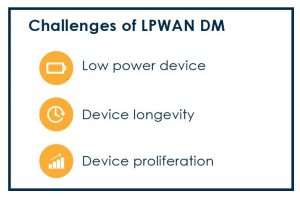
Because of the unique attributes of LPWA networks, service providers and enterprises must select IoT DM solutions that are uniquely designed to address and respond to the characteristics of LPWA networks and devices. IoT DM is powered by a set of technological tools and features for managing the lifecycle of IoTconnected equipment including LPWA end devices. These tools allow users of Kerlink’s Wanesy™ Device Management Platform to:
Configure applicative parameters including logical name, application destination and wake-up behavior
Configure protocol parameters such as net address or radio parameters including channel and modulation
Ensure device security, key management and network subscription including commissioning
Monitor device behavior, power consumption and radio footprint
Manage network performance with overthe-air adaptive channel configuration while managing radio footprint and cell scalability related to regional radio constraints
Conduct complete or partial over-the-air firmware updates including in batches or pre-set campaigns
IoT DM is commonly used in mobile communications based on the Open Mobile Alliance DM (OMA DM) standard. This standard creates a protocol for LightweightM2M (LwM2M) over Constraint Application Protocol (CoAP) which is generally well suited to 3GPP topology networks. The Internet Engineering Task Force (IETF) is also defining a suite of protocol for LPWAN using CoAP Management Interface (CoMI).
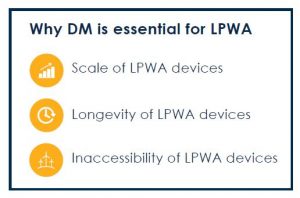
IoT device management:
essential for LPWA installations
IoT remote device management is a critically important component of any IoT solution. The ability to cost-effectively and securely manage IoT devices is relevant to all IoT deployments. Based on 12 years of broad experience with worldwide customers, Kerlink has identified three reasons why IoT DM is essential in LPWA installations.
1. LPWA installations at scale touch hundreds of thousands or millions of devices requiring a highly cost-efficient, scalable and global management tool.
Communicating with extremely high numbers of IoT LPWA devices requires automated, bulkdevice lifecycle management (e.g., provisioning, updating and deprovisioning). LPWA devices are generally part of large-scale deployments and benefit from bulk provisioning processes. In addition, a quality LPWA DM platform vendor supporting large-scale deployments should (1) provide continuous quality assurance and patches to the platform as needed, (2) adapt the platform to the customer’s evolving operational environment with firmware, hardware and software updates and (3) offer value-rich new features to increase platform functionality.

Revenue per device may be low which requires automation to keep operational costs down and ensure operations can financially scale in the long run.
Third-party systems and platforms often interact with device installations and API end devices for efficient bulk operations and batch processes, therefore, interoperability and open solutions remain key for efficient deployment.
2. Longevity of LPWA devices requires unique features to support long-term operation and security.
Connected devices have an expected lifetime of 10 years or more in many cases. This requires that they be monitored and updated by configuration or firmware switching to prevent overconsumption of power and bandwidth on the radio network.
Intelligent DM maximizes the efficiency of power used for transmission so that a device’s battery life is not unnecessarily diminished.
DM must allow the rollout of inevitable security updates due to LPWA devices’ longevity.
Devices require endpoint radio configuration and firmware updates to stay up to date with the latest developments in regulations.
Devices must be monitored to proactively identify faults and prevent major problems upstream.
3. Lack of LPWA IoT device accessibility requires a zero-touch, remote DM solution.
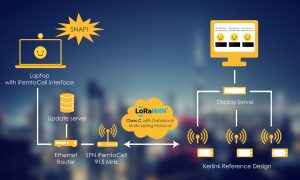
Figure 2: Kerlink IoT device management illustrating
the LoRaWAN™ firmware updating process
Devices must be easy to install, manage and diagnose remotely. Installation and maintenance crews will frequently lack deep technical knowledge or adequate tools to triage the connectivity elements of these LPWA devices.
Many IoT devices are deployed in areas that are physically difficult or costly to access. DM must provide capabilities to configure and maintain a device remotely once installed to allow easy troubleshooting and operation.
Fast, simple provisioning allows solutions to be deployed quickly to ensure the solution is replicable in a cost-effective way.
Operator and Enterprise Benefits of LPWA Device Management
LPWA DM has several financial and operating benefits for a service provider or enterprise. These include:
Optimizing the total cost of ownership (TCO) and return on investment (ROI) of deployment of LPWA networks. By using remote, automated device lifecycle management, a service provider or enterprise can minimize manual DM procedures and lower ongoing operations costs while guaranteeing a constant high level of quality.
Adapting the embedded application during the lifetime of the device. Using over-the-air updates, a service provider or enterprise can update embedded applications to keep up with market or connected services evolution to meet evolving end-customer expectations.
Increasing the ability to leverage predictive and preventative maintenance to orchestrate multicast updates or configuration campaigns.
Bundling additional services with other pieces of the IoT offering to provide new recurring revenues for service providers and enterprises. A leading LPWA DM solution provides integrations to a service provider’s and enterprise’s other IoT systems.
Addressing maintenance operations and trouble resolution with high efficiency. Using the real-time monitoring and alerting features of an IoT DM platform, a service provider or enterprise can provide enhanced maintenance to quickly find and repair troubles with devices or an underlying LPWA network.
Managing the device fleet in a consistent way. LPWA DM allows a service provider or enterprise to manage its IoT devices with the same tools it would use to manage a fleet of mobile phones. And some of these tools might be based on OMA DM standards for LwM2M to provide a standards-based solution.
Reconfiguring devices to optimize network use. IoT DM allows a service provider or vendor to reconfigure devices on an LPWA network to maximize network efficiencies and ensure global quality of service (QoS) across the network.
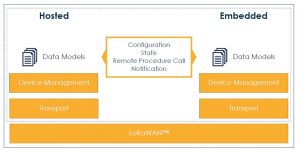
Figure 1: Device Management in a LoRaWAN™ Model
Kerlink’s Device Management Solution
By providing its Wanesy™ Device Management Platform on top of its existing core network Wanesy™ Management Center (Operational Support System – OSS), Kerlink now offers a full offering for public or private service providers and enterprises to remotely and securely operate their connected devices. Combining state-of-the-art LPWA network stations, core network management solutions and end-device remote monitoring and configuration tools, Kerlink enables existing players and new entrants to quickly roll-out and operate highly reliable connectivity networks to simplify their operations and generate new revenue streams. Focused on leveraging industryproven open solutions and promoting interoperability, Kerlink is dedicated to building a vibrant ecosystem around its solutions to boost IoT growth in verticals where use cases can be efficiently supported by LPWA connectivity. These include smart city, industry, agriculture, transport and asset management applications.
The company is a founder and board member of the LoRa Alliance™ and a world leading LoRaWAN™ IoT equipment and solutions provider. It has installed more than 70,000 Kerlink stations and other equipment in Europe, South Asia and South America for more than 260 clients.
About Kerlink
Kerlink, a co-founder and board member of the LoRa Alliance™, specializes in network solutions for the Internet of Things (IoT). Its mission is to provide its clients – telecom operators, businesses and public authorities – with equipment, software and services to design, launch and operate IoT networks. Over the past three years, Kerlink has invested more than €8 million in R&D. In just over 10 years, more than 70,000 Kerlink installations have been rolled out for more than 260 customers, including major telecom operators such as Tata Communications, and utilities such as GrDF and Suez. The company’s solutions are enabling IoT networks worldwide with major deployments in Europe, South Asia and South America. In 2016, Kerlink generated revenues of €14.1 million, 25 percent internationally. Since 2013, it has posted average annual growth above 50 percent. Kerlink has been listed on Euronext Growth Paris since May 2016 and was added to the EnterNext PEA-PME 150, an index of 150 fast-growing French SMEs in 2017.
Word of the Expert 1:
CRUDEN – the six basic functions of device management
There are six basic operations that describe typical interactions between end devices and an IoT device management (DM) system. The acronym CRUDEN – a modified version of the acronym CRUD that is associated with computing and persistent storage – represents these six operations: Create, Read, Update, Delete, Execute, Notify.
Create: A remote system can create a resource on an end device. For instance, a new firmware update session can be instantiated using the create operation.
Read: An IoT DM system is able to read end device resources. A common example of a read operation is the aggregation of radio interface statistics from a set of devices.
Update: Service providers and enterprises can use an update operation to change a configuration parameter including application behaviors on an end device.
Delete: Once created, resources including configuration resources can be erased by the delete operation.
Execute: What is pertinent and innovative for IoT device management platform is the ability not only to read and write, but also execute commands on end devices. These command could be simple such as reboot commands, but could also be more complex such as applying firmware updates, performing factory resets or activating an actuator.
Notify: Finally, a notify operation allows end devices to autonomously send data to remote systems without the need of polling. For example, an IoT device management system can subscribe to the battery level of the end device and request to be notified when the level reaches a prescribed threshold. No polling is required to complete this notification operation.
CoAP – a data transfer protocol for IoT
Constrained Application Protocol (CoAP), an IETF proposed standard as described in RFC 7252, is the standard and widely used data transfer protocol designed for LPWA end devices. CoAP is designed for constrained devices such as LoRaWAN™ end devices and provides a request/ response interaction model very similar to the RESTful model. It easily maps with HTTP, but exhibits much lower overhead on the system.
Interestingly, CoAP provides a seventh operational function – the observe operation – to the CRUDEN capabilities. CoAP observe notifications, as described in RFC 7641, are directly mapped to IoT device management systems’ notify operations.
CoAP for LoRaWAN™: some unique stakes and solutions
There are some unique features of LoRaWAN™ end devices that make implementation of the current CoAP standard challenging. In particular, CoAP assumes a virtually always-on connection to an end device, fairly immediate device-to-system response time and a payload that is much larger than the typical LoRaWAN™ end device delivers.
Therefore, to operate an IoT DM service for LoRaWAN™ end devices while providing the necessary
CRUDEN operations, several solutions are being created to modify CoAP for LoRaWAN™. The
Internet Engineering Task Force (IETF) LPWAN working group is defining CoAP Static Context
Header Compression (SCHC) to fit CoAP to LoRaWAN™ and other LPWAN technologies. This
work-in-progress defines an off-band allowance between end devices and remote servers to
reduce the amount of in-band to transport to CoAP headers. In addition, the Open Mobile
Alliance (OMA) is working on a definition to allow smaller CoAP payloads to accommodate
LightweightM2M over LoRaWAN™.
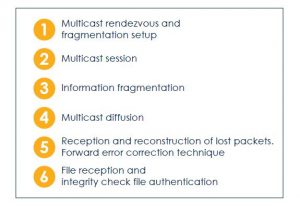
Figure 3: Over-the-air firmware updating process
Word of the Expert 2:
Successfully execute over-the-air firmware updates
The LoRa Alliance™ produces recommendations for the firmware update over-the-air (FUOTA) process. Several steps are required to achieve FUOTA on a group of LoRaWAN™ end devices.
The process starts with a multicast rendezvous and fragmentation session setup. Once established, the firmware or any other binary large object is transmitted using LoRaWAN™ multicast capabilities. The LoRa Alliance™ recommendations also suggest that enterprises and service providers use the forward error correction technique to recover lost packets without the need for the network to be informed of the lost packets. Once the entire file is received, firmware authenticity and integrity are verified.
To start a multicast session on a group of LoRaWAN™ end devices, each device must be provisioned with session information. This can be achieved, as described earlier, using CRUDEN operations using a firmware update data model such as the one provided by LightweightM2M (LwM2M). The session information transports LoRaWAN™ specific data including multicast radio parameters (e.g., address and channel), security parameters (e.g., key derivation and counters) and session timing parameters (e.g., start point and duration).
Fragmentation information is also required for the end device to be able to reconstruct received data. Such pieces of information are not LoRaWAN™ specific and could be described using a more generic data model. Relevant information includes the number and size of each fragment sent from the update server and the encoding scheme to eventually recover missing packets.
Once setup, multicast diffusion of the data is handled solely by the LoRaWAN™ network layer. The multicast-capable network server selects the cluster of LoRaWAN™ gateways emitting the FUOTA request based on the relevant end devices. The timing, duty cycle and radio coverage criteria are also used to select the correct cluster of gateways.
Each end device is setup to receive data on the provided multicast address. The process handles the reception and reconstruction of lost packets using a forward error correction code. If a device becomes aware of the absence of a packet due to errors in the numbering sequence, the fragmentation session will keep sending the missing data containing redundant packets. A receiver can regenerate a missing fragment with the help of one or several backup packets and already received packets.
Finally, the system will validate the received data in two ways. First, the network will ensure that the entire file has been received and reconstructed correctly. This network integrity is done using a file integrity check, verifying a file against the network. Second, the system needs to authenticate the file. Authenticity must use cryptography to securely validate the origin of the file before applying it. Manufacturers can cryptographically sign the firmware file using asymmetric keys deployed during the manufacturing process of their devices.







